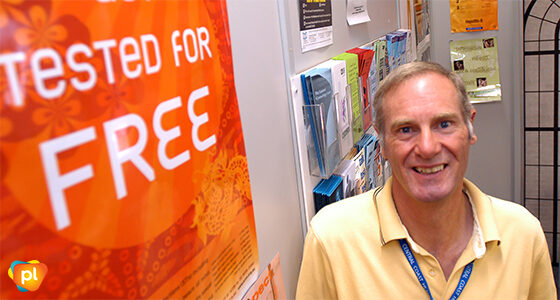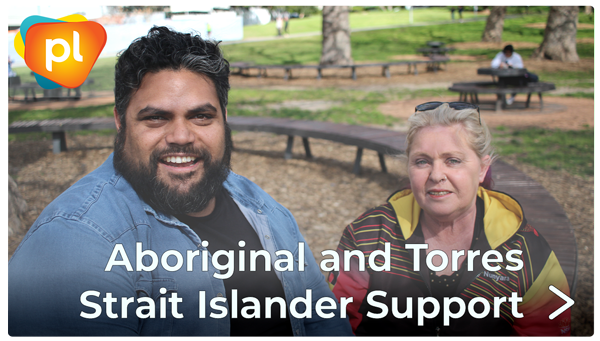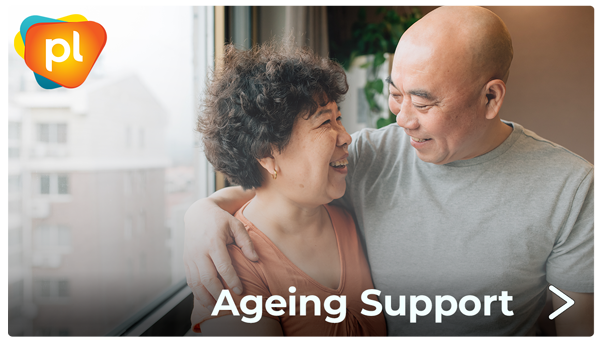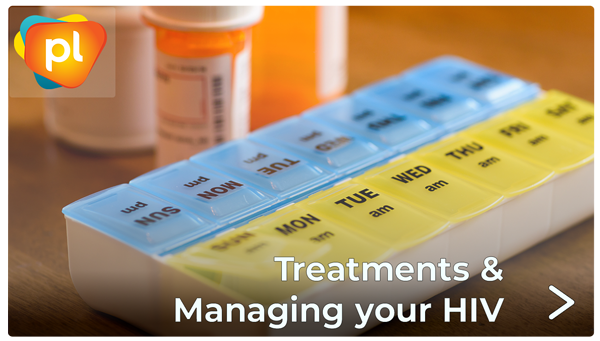1999-2004 / Part 3: One step forward, Two steps back
Before you read more about my story covering 1999–2004 below, I want to first share some achievements that added more diversity to the PLWHA (NSW) (now Positive Life NSW) Positive Speakers Bureau (PSB) during its infancy spanning the years 1997–2004.
November 1997-March 1998: ‘Versa’ phone chat line and peer support forum
‘Versa’ was an innovative and ambitious pilot project administered by the PSB in collaboration with Roche Products, which supplied an unconditional educational grant. ‘Versa’ was specifically for people living with HIV to be able to speak with a peer (or join a chat line) and to ask questions on any HIV related issues and get treatment advice. TeleTech International supplied the physical facility and technology at their St Leonards headquarters. Six PSB speakers were trained to facilitate the service and were rostered on Thursday to Sunday nights.
May 2000: PSB Rural Video
This video was produced and sold to schools and other organisations as an extension of the ‘The Human face of HIV/AIDS’ concept used by the PSB to reach at-risk groups in the communities outside metropolitan Sydney. The video was launched at the HIV/HCV and Sexual Health Forum in Ballina on 18 November 2000. Levi Strauss Australia and the AIDS Trust of Australia provided the funding which, with the aid of Training, Health and Education Media Pty Ltd, presented three PSB speakers in the video doing what they normally did in ‘real life’ situations in high schools throughout NSW.
July 2002: 14th International AIDS Conference, Barcelona Spain
I represented PLWHA (NSW) and the PSB as well as the Sydney AIDS Memorial Quilt Project at the conference, for three tasks. The first was doing a presentation using the rural video and talking about the PSB Project and its successes. The second was roaming the conference precincts after my presentation donating 200 videos that had been transported to Spain several weeks beforehand as training aids for other international HIV/AIDS organisations. The third was attending the International AIDS Memorial Quilt display, reading the names of Australians whose memorial panels were featured on the section of the quilt that I took with me as hand luggage, on behalf of the Sydney AIDS Memorial Quilt Project.
There were many educational conference firsts and highlights for me. However one of the best was seeing Nelson Mandela and Bill Clinton speaking on stage during the closing plenary. They were not only passionate about HIV/AIDS issues, but also extremely interesting and very funny, complimenting each other.
The only sour thing occurred on the day I departed Spain, when I was pick-pocketed after using an ATM and found myself with no money or credit cards. The police refused to help me and, because of that, I had to resort to jumping train barriers at two railway stations to get to the airport on time. My flight home had an extended delay in Malaysia and the airline provided a free buffet meal with alcoholic drinks in the terminal. I went through twice.
The following year the PSB was funded by the Sydney Quilt Project to send PSB speakers to schools in rural areas, taking sections of the quilt with them. Speakers would incorporate information about the people that were represented on the quilt panels, together with a brief history of the Sydney Quilt Project while also telling their own story. These talks were very popular and a novel way of educating students about the implications of HIV.
October 2003: ‘Enjoying Sex Safely’ starring Con Le Dom
This easy-to-understand printed resource was designed and focus tested with teachers and high school students doing their Personal Development, Health and Physical Education (PDHPE), Crossroads and Sciences curriculums before it was launched in 2003. This pocket booklet successfully addressed questions posed by students during PSB speaking engagements.
In part, the 2003 promotional fIyer said:
“Written in an easy-to-understand style, with a bright and creative design, ‘Enjoying Sex Safely’ includes an overview of life with HIV/AIDS such as personal perspectives from, and information about the impact of treatments on, the lives of people living with HIV/AIDS. The engaging Con Le Dom graphic then guides the students through the practice of safe sex, including the importance of using condoms, hints designed to put the students more at ease with shopping for, carrying, storing, and using condoms to protect them from sexually transmitted infections (STIs).”
The PSB recommended that the distribution of the booklet should be at the Principal’s or teacher’s discretion. This was done successfully and copies made available to all students taking part in a PSB talk.
1999-2000: The rocky road ahead, or perpetuity
On 5 January 1999, my birthday coincided with first of four radiotherapy sessions to treat the remnants of Kaposi’s Sarcoma (KS) after chemotherapy fifteen weeks previously. The first two sessions resulted in unsightly bruising on my lower legs with both knees also becoming severely swollen. Dr Cassy Workman thought that the blood flow in my legs was being restricted, with blood pooling in my upper legs. New lesions started to appear all over my body. I was sent on sick leave with orders to stay off my legs. There was very little change for the third session. However, the fourth session resulted with a marked improvement in my left leg, yet my right leg was worse. The radiation oncologist, Dr Chris Milross thought my problem was lymphatic and suggested it was likely Dr Goldstein would instigate another round of chemotherapy. Two weeks later, after being reviewed by Dr Goldstein, fortnightly chemotherapy treatment with Doxorubicin (Dox-SL) recommenced because alternative drugs were considered too toxic.
A month after re-starting chemotherapy, the swelling, size, and colour of most lesions on both legs had significantly improved, which made walking easier. Unfortunately, once again I needed the intervention of the drug Thalidomide, due to severe oral mucosal irritation and swelling of my tongue which made eating solid foods and drinking hot liquids very difficult. Fortunately, Thalidomide was fast acting, and this situation was resolved a couple of weeks later.
Concern continued about my abnormal Liver Function Tests (LFTs), and I was referred to another Prince of Wales Hospital specialist, Dr George Marinos, who suspected my high LFTs were lipodystrophy and/or antiretroviral drug related and he wanted to perform a liver biopsy to try and rule out anything more serious. The biopsy was scheduled for 28 August 1999. A month prior I had received confirmation that I had been granted partial funding from the Polish Foundation of Humanitarian Aid to attend the 9th International Conference for PLWHA in Warsaw in mid-August. The biopsy went ahead as planned and revealed that my liver was dying and there was also fibrosis. The antiretroviral drug Nevirapine that I was on was withdrawn the same day, due to a severe reaction. This was the first change in my mega HAART (Highly Active Antiretroviral Therapy) regimen since November 1997.
Unfortunately, I was not allowed to travel and had to withdraw my scholarship to the conference. My manager, Ryan McLaughlin, took my place. Shellee Williams (nee Korn) brought me back a book, “Auschwitz voices from the ground” from her visit to Auschwitz. We had planned to visit Auschwitz together and so the book was a very thoughtful gesture.
By early September 1999, I was exhausted and mentally drained but otherwise well, despite losing a lot of weight. Things seemed so bad that I thought I was going to die. While in that headspace I decided there were four things that I needed to achieve. These were to visit my first ex-wife Janice and her partner Rhonda in California; separate from Rodd, my partner of a year; sell my house in St. Peters to move to the NSW Central Coast; and lastly, to retire from the workforce and my voluntary commitments.
I wanted to apply for a life insurance buy-back scheme which was being advertised at the time, and Dr Cassy Workman provided me with a letter to support my application. The last paragraph in this letter states:
“It is difficult to give a precise opinion regarding Mr Maudlin’s prognosis given that the cause of his liver disease has not yet been defined. However, both the rapid loss of CD4s and Paul’s development of rapid and extensive Kaposi’s Sarcoma (an AIDS-defining condition) do not bode well for a long-term outlook.”
The scheme turned out to be an insurance scam and the letter was never submitted. My life insurance policy remained intact. Friends tried to warn me that if I sold my house I would never be able to re-buy in the Sydney Metropolitan area again. Eighteen months later this advice would come back to haunt me and was one hundred percent correct. Tongue in cheek, I put the house on the market before going on holidays to the USA.
At the time, people living with HIV were prohibited from entering the USA and taking HIV antiretrovirals with them. Given I was still on a large cocktail of drugs, to get around the entry problem I decided to camouflage ten days’ supply of medication by putting it all together in a large glass bottle which was wrapped in aluminium foil to hopefully avoid detection if x-rayed, before wrapping in bubble wrap and enclosing in cardboard box and mailing to Janice several weeks beforehand. To secure my entry into the USA I neglected to declare my HIV status on my entry documentation.
I successfully entered San Francisco without any problem, and Janice picked me up and off we went. My parcel reached its destination without incident, and I had a lovely holiday with the girls and their family who I had not seen since 1974. The only problem I had while I was in the USA was returning to San Jose from Sacramento after attending Janice’s parents golden wedding anniversary. We were travelling in the girls’ camper van which broke down in a remote area of California, and we were almost attacked by a rogue mountain bear.
After getting home, Rodd and I agreed to separate. My house sold in late October, and I purchased a brand-new house in Blue Haven. In mid-November I was feeling more in control of my life when suddenly I was shocked to find myself needing to begin a third round of chemotherapy. The move to the Central Coast took place in mid-December 1999 as planned and Rodd helped me with some of the moving, getting me settled in the new house, and visited a couple of times before we lost contact altogether several months later. Unfortunately, I did not have quite enough money to buy the house outright and needed a small mortgage while still needing to continue working. Due to the circumstances described below, I ended up working ten more years before I was able to finally semi retire in June 2010. I had to continue to commute by train to Sydney for work and medical appointments. My theory was that regardless of whether I lived longer or died, buying another house, was cheaper than renting and if everything went south, it would be an asset for my adult children.
The new year (2000) commenced with more ongoing problems with swelling and bruising in both legs and so I was allowed to work remotely from home for a brief period. Twenty-two years ago, working remotely from home was a very innovative concept and something not many employers were embracing. For PLWHA (NSW) it meant phoning the office to say that I would be logging into my office computer, a paper sign would be placed on the screen that would alert staff that they could not use that machine while I was logged on from home. I used this time to do administration work for the PSB and continue writing the project’s first training and workshop manual. I returned to work after a month and began planning and recruiting for the fifth Positive Speakers training course.
In February 2000, the chemotherapy and radiotherapy treatment for KS were finally over, twenty months after starting. Apart from minor skin shrinkage on my lower legs, it took a further two years for my legs to totally heal, with KS disappearing completely and hair growing back.
I often kept my head hair short (a throwback from my Navy days) and was very pleased that I had not lost it or any other bodily hair. I have not had any more recurrences of KS since, but did have another unrelated HIV issue with my left leg in 2019. Sorry, you will have to wait until the last instalment (Dec ’22) of my story to find out what it was.
2000-2001: A new man and the tale of three houses
Commuting was extremely draining, and so my solution to that was to stay in a share household in Alexandria during the week, returning home only on weekends. This arrangement worked well until I answered a personal advertisement in the Sydney Star Observer and eventually met Adam who gave me a new lease on life and sense of purpose. We have now been together 22 years.
For a couple of months, I was living between three homes, and so something had to give. I moved out of the share accommodation, and stayed with Adam while he was house-sitting his ex-partner’s house while he was working overseas. I sold the house in Blue Haven, putting the house contents into storage on the Central Coast (I must have known something) and returned to Sydney a year after first re-locating. This accommodation was short lived. The house we were staying in was being sold, so we decided to buy our own house. After weeks of searching, we decided to buy a more affordable house in Blue Haven in March 2001, mainly because my workdays had been reduced therefore making the train commuting much more bearable.
2001-2002: SESAHS HARP Unit and PLC Surry Hills
I took a year-long hiatus from the PSB to accept a temporary Health Promotion position with the HIV and Related Disease (HARD) (later termed HIV and Related Programs) Unit at South East Sydney Area Health Service (SESAHS). Three months later the Area appointed me to administer the Positive Living Centre (PLC) while a tender process was under way, after the Centre’s Management Committee was dissolved following the defunding of the service by the Minister of Health.
My brief was to manage and continue the day to day activity service and deal with financial and legal aspects of the defunding on behalf of SESAHS, while also keeping all aspects of the service running while minimising the disruption to clients and dealing with their fears and concerns.
During this time, I secured office space for the Luncheon Club AIDS Support Group after successfully negotiating lease arrangements with SESAHS and oversaw the smooth operation for their Monday meal service, which catered for 120 PLWHA.
Clients were devastated when they were advised that one of their friends, who had been missing for several weeks, had been murdered by his partner who was also another client of the service. The attack on the Twin Towers in New York also occurred shortly after that and understandably this was a very traumatic time for everyone.
I have fond memories of staff, volunteers and clients at the PLC and was happy to be able to give some hope and certainty during very difficult times during the six months that it took for the tender to be awarded to ACON.
2002-2004: Lipodystrophy, Fusion Inhibitor, and diagnostic scans
Other than the complicated process of participating in six studies over eighteen months, life settled down somewhat. Despite being compliant taking HIV antiretrovirals, my blood results continued to be disappointing, necessitating several changes in medication either due to resistance or drug reactions. Two of the studies were to investigate the long-term effects of Rosiglitazone (Rosey) for controlling lipodystrophy to determine whether it would increase fat in my arms, legs and cheeks and decrease fat in my waist. The lipodystrophy studies had the added requirement for regular ultrasounds, dual energy x-ray absorption (DEXA) and computerised tomography (CT) scans. Four years later I found myself enrolled in one of the early studies for Polylactic Acid (Sculptra) injections for facial lipoatrophy and four years after that I needed a series of follow-up injections once Sculptra was licenced.
Two more studies designed to explore whether the amount of HIV in my blood could be controlled by using the subcutaneous injectable infusion inhibitor Enfuvirtide, together with other antiretrovirals while excluding all nucleoside reverse transcriptase inhibitor (NRTI) drugs followed. I hated doing the twice daily injections, and when going on holidays in New Zealand, I found it very awkward having to mix the drug up beforehand. These two trials did not improve my CD4/VL and so I was extremely happy when they ended. The other two studies were to compare the safety and effectiveness of the boosted protease inhibitor (PI) Tipranavir with a low dose of the PI Ritonavir to control my viral load.
Two months after starting work at the Holden Street Sexual Health Clinic in Gosford, Dr Jeffrey Post performed a fifth and final liver biopsy, which once again did not reveal why my LFTs were abnormal, along with evidence of having mild steatosis, minimal lobular inflammation and no fibrosis or portal inflammation. The consensus was that the nineteen changes in drug regimens since beginning antiretroviral therapy in 1995 had contributed to my suspected liver disease. In October I reluctantly transferred my HIV care to Dr Michael Boyle at John Hunter Hospital Immunology Department in Newcastle, when my CD4 count was 70 with a viral load of 100,000 copies. Two weeks later after yet another HIV antiretroviral change, my CD4/VL counts were 180/60,000. By year’s end, there was a considerable difference (225/59,500). My improved results would be short lived.
In the next edition I will write about the period 2005–2010, severe drug reactions, another AIDS-defining condition, phenomenal immune restoration, osteopenia, semi-retirement and PSN/HUGS, Better Health Self-Management Program, and another Positive Speakers Group.
Paul R Maudlin OAM, JP
Published in Talkabout #203 June 2022







